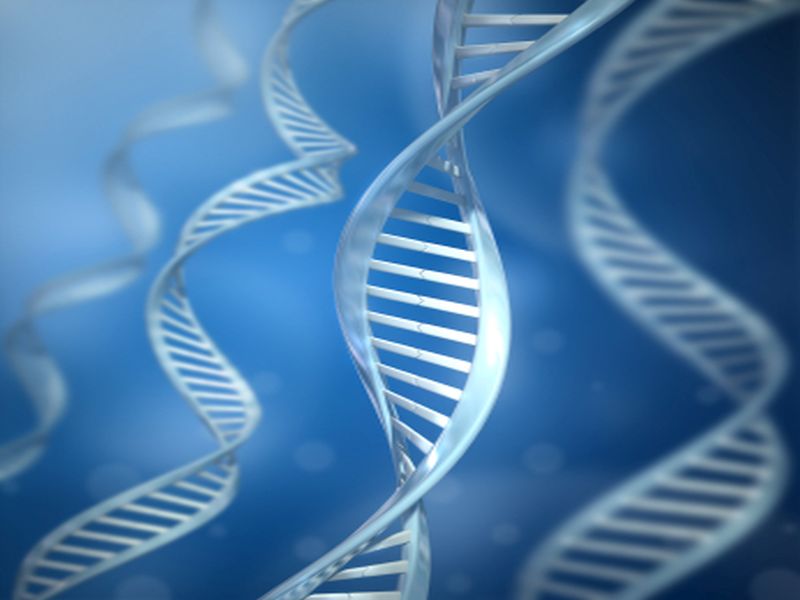
In a first-ever experiment, geneticists have successfully modified a human embryo to remove a mutation that causes a life-threatening heart condition.
This is the first study to demonstrate that a gene-editing technique can be used in human embryos to convert mutant genes back to their normal version, the researchers said.
The new procedure tackled a genetic mutation in human embryos that causes hypertrophic cardiomyopathy, an inherited condition in which the heart muscle becomes abnormally thick.
The mutation was successfully repaired in 72 percent of 18 embryos that were created in a lab using sperm from a male donor who carries the hereditary heart condition, said team member Dr. Paula Amato. She is an adjunct associate professor of obstetrics and gynecology at Oregon Health & Science University (OHSU) in Portland.
The procedure also might work in other genetic diseases caused when a person has one good copy and one mutated copy of a gene, Amato said. These include cystic fibrosis and cancers caused by mutated BRCA genes.
“This embryo gene correction method, if proven safe, can potentially be used to prevent transmission of genetic disease to future generations,” Amato said.
But while the procedure is considered to be the first of its kind, human trials are not currently allowed in the United States.
Hereditary hypertrophic cardiomyopathy occurs in about one out of every 500 adults, and is passed along when a person winds up with one good copy and one mutated copy of a gene called MYBPC3, the researchers said.
There’s a 50 percent chance that the children of a parent with the disease will inherit the genetic mutation for the disease, according to a Mayo Clinic estimate.
People with hypertrophic cardiomyopathy are at increased risk of heart failure and sudden heart death. The condition is the most common cause of sudden death in otherwise healthy young athletes, researchers said in background notes.
To repair the problem, the research team “broke” the mutated version of the MYPBC3 gene inside human embryos, using technology that allows scientists to snip a specific target sequence on a mutant gene.
Scientists discovered that when this occurs, a DNA repair process employed within human embryos activates to fix the broken gene, using the normal copy of the gene as a template.
The result: an embryo with two healthy copies of the gene that, if implanted in a woman and allowed to gestate, should result in a baby free from risk of hereditary cardiomyopathy. Further, any children descended from that baby should also be free from this genetic risk.
The researchers found that when they performed this procedure, all the cells in corrected embryos wound up containing two normal copies of the gene, Amato said.
The new report was published Aug. 2 in the journal Nature.
According to senior researcher Shoukhrat Mitalipov, “Every generation on would carry this repair because we’ve removed the disease-causing gene variant from that family’s lineage.” Mitalipov is director of the Center for Embryonic Cell and Gene Therapy at OHSU.
“By using this technique, it’s possible to reduce the burden of this heritable disease on the family and eventually the human population,” he said in a journal news release.
Amato added that researchers did not observe any “off-target effects,” or unintended genetic changes caused by altering the mutated MYPBC3 gene.
The researchers broke the mutated gene using a technology called CRISPR-Cas9. Essentially, the process uses genetic techniques to target sequences of DNA inside the mutant gene. Those targeted sequences are then snipped using Cas9, an enzyme that functions like a pair of molecular scissors.
Until now, CRISPR-Cas9 has been used as a lab tool to help scientists understand the impact that a mutation has on disease, said Donna Arnett, dean of the University of Kentucky College of Public Health. Researchers use it to introduce a mutation into genes and then study the effects of that mutation.
This new research project is a “first-of-its-kind” use of the technology to attempt to correct a mutation in human embryos, said Arnett, a spokeswoman for the American Heart Association.
The process was tested on 18 lab-created embryos using sperm from the male donor and eggs donated by 12 healthy young women, the study said. These embryos all carried one good copy and one mutant copy of MYPBC3.
“The results were encouraging,” Arnett said. “There are still many scientific details to work out, but this technology offers the potential to cure monogenetic diseases in embryos in the future, leading to normal, healthy infants.”
Used in conjunction with pre-implantation genetic diagnosis, this procedure could improve the efficiency and success of in-vitro fertilization by requiring fewer IVF cycles to produce a genetically healthy embryo, Amato suggested.
“You would minimize the risk to the woman undergoing ovarian stimulation, and certainly decrease the cost as well,” Amato said.
Researchers will next focus on testing the safety and improving the efficiency of the CRISPR-Cas9 process, possibly by using other genetic tools in combination with it, Mitalipov said. After that, they could proceed to human trials, in which the corrected embryos would be implanted with the goal of establishing pregnancy.
In the United States, the U.S. Food and Drug Administration is prohibited from considering clinical trials related to germline genetic modification, Amato said. In addition, the U.S. National Institutes of Health are not allowed to use federal funds to promote embryo research.
It is possible that human trials could occur in another country with laws allowing such procedures, Mitalipov said.
More information
For more on CRISPR-Cas9, visit the Wellcome Genome Campus.
Source: HealthDay

Leave a Reply